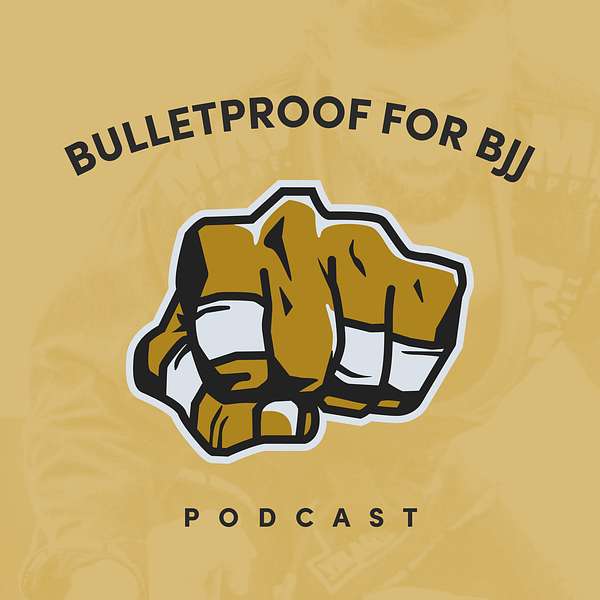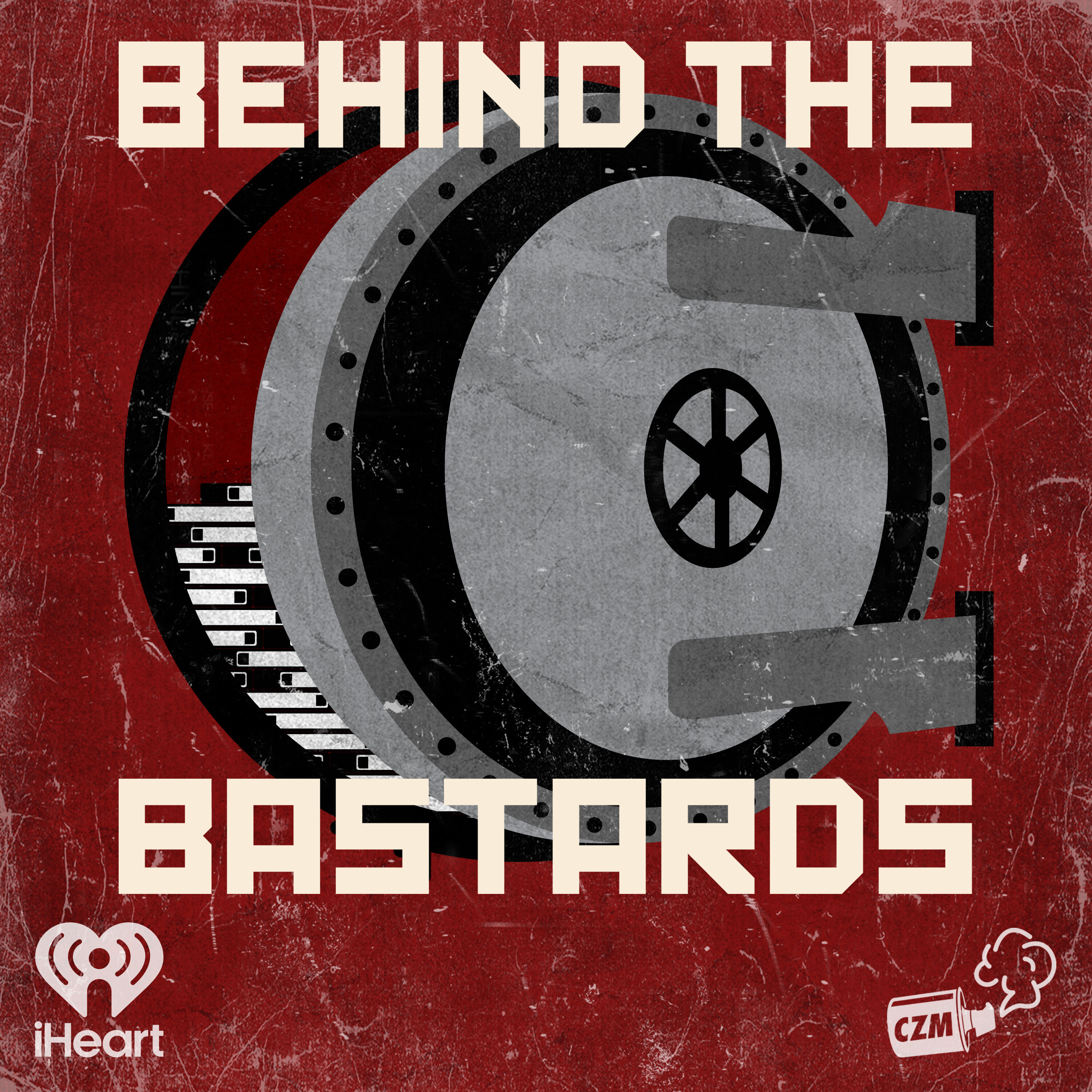
Bulletproof For BJJ Podcast
Discussions on improving your BJJ, navigating mat-politics and all aspects of the jiu jitsu lifestyle. Multiple weekly episodes for grapplers of any level. Hosted by JT and Joey - Australian jiu jitsu black belts, strength coaches, and creators of Bulletproof For BJJ App. Based out of Sydney, Australia
Bulletproof For BJJ Podcast
Sandbag Training: Building Raw Strength for Grappling
Episode 324: Want to elevate your Strength forJiu-Jitsu? JT & Joey discuss the transformative power of "GRIT" the Ultimate Sandbag Training Program. Guaranteed to boost your strength for BJJ , this episode guides you through selecting the right sandbag weight, which is crucially around 40-50% of your own body weight, and the art of no-gi grips that translate for hard rolls. They break down the nuances of sandbag training, breathing and bracing plus a firm grip are key to mastering this dynamic workout. It's not about pumping out endless reps; progression here means smartly increasing your sets to achieve rapid strength gains. They share why fresher is better when it comes to workout efficacy, and how our app community offers additional tips, support, and guidance through your training cycles. Whether you're confined to a cramped apartment or lucky enough to have a spacious gym, this episode is packed with strategies for optimising your sandbag training to ensure maximum gains.
Get Stronger & More Flexible for BJJ with the Bulletproof For BJJ App- Start your 7 Day FREE Trial: https://bulletproofforbjj.com/register
Stay Hydrated with Sodii the tastiest electrolytes in the Game! Get 15% OFF: BULLETPROOF15 https://sodii.com.au/bulletproof
Parry Athletic - Best training gear in the game... Get 20% OFF Discount Code: BULLETPROOF20 https://parryathletics.com/collections/new-arrivals
A good martial artist does not become tense, but ready. Essentially, at this point, the fight is over, so you pretty much flow with the goal who is worthy to be trusted with the secret to limitless power? I'm ready. So every week, we put out multiple episodes to help you on your jujitsu journey. Now it's a privilege for us to be in this position, but we want to ask one thing from you, and this is a very small gesture on your part, but it means the world to us. Simply hit the follow or subscribe button on whichever platform you enjoy this podcast on. It means the world to us. Thank you, jt.
Speaker 1:Talk to me about the sandbag program. Yes, indeed, the sandbag program. We're releasing it. It is awesome because it's simple. All you need is one sandbag and possibly a lighter item as well. Let me explain. So you're looking for a sandbag which is approximately 40 to 50% of your body weight. Now, for some of you out there, in terms of lifting, if you have no lifting experience, it's always better to err on the side of like slightly lighter. So if it doesn't quite marry, up to 50 of your body weight, aim to go a fraction lighter. You'll get stronger, you'll get your technique good and you can go from there. But the other thing I would advise, as a slight addition to that, is either a kettlebell, which is half the weight of the sandbag you're getting, or a med ball or a dead ball, so you've got something warm up with. There are some dynamic drills which are in the program, so having a lighter weight is good for that, and then you've got your slightly heavier one to get you primed. Okay, nice, now tell me who is this for? Can beginners do this program? Beginners can indeed do this program.
Speaker 1:Generally, what I'd say is the most important thing is to make sure that you're keeping your technique quality. Is, the most important thing is to make sure that you're keeping your technique quality. You know that's our rule for everything. But with sandbags, because of the unorthodox nature of it, you are more inclined to round your back, you are more inclined to like breathe incorrectly, and that's why I always say you know err on the side of caution. So it's great because it has no-gi applicable grips.
Speaker 1:I don't want you guys to buy a sandbag that has handles. The idea is that you can't grip it properly, so you have to grip your own hands S-grip, gable grip, palm grip, which is very applicable to no-gi, but it's also great for all-round strength if you're training in the gi as well. Yeah, so in that way. Yeah, there are those like tactical sandbags with the handles and chips, sure, which, if that's what you got, it's fine, that's okay. But that's not what which? That's not the benefit we're seeking.
Speaker 1:So our preference is the more kind of cylindrical, cylinder shape sandbag. Yes, and you know there's a lot of different brands that do them. Ideally, you want to get the ones with the zip and the Velcro. They didn't used to have those. Those. They're usually a dual ply, so they have an inner bag and an outer bag. That just means it's not going to burst on you and sand's going to go everywhere. Yeah, nice.
Speaker 1:Now correct me if I'm wrong, but this program is great if you don't train at a gym, like if you just want to work out in your garage or your living room, yeah, it's perfect for that. Like. It's one of those things where most gyms don't have sandbags. Yeah, fair play. Andbags also, in the same way kettlebells are. You buy them they're actually not that expensive and then you set you don't have to Got it for life. Pretty good. Yeah, obviously you don't want to leave it outside to get in the rain or anything like that, but you could just have it on your balcony at your foot. So in that way it's actually a really home gym friendly tool. That's mad.
Speaker 1:Now, specifically for people on the app, you would couple this with, like a mobility program, definitely Time permitting. There is warm-up drills in there specifically for it. But I would definitely say anyone who's doing any lifting, you want to be doing some additional stretching and flexibility work. Do not underestimate how much this will make you tired. It won't necessarily make you sore, maybe, but it will fatigue you. That's why it's only two days a week. It looks simple, but simple doesn't equal easy. It's simple but it's hard. So I always encourage people take it slow for the first cycle, gauge how it feels, and you're going to get stronger real quick, matt.
Speaker 1:So in that regard, if someone's like look, I normally train like four days a week, would you suggest if they wanted to add extra workouts let's say that they were recovering adequately could they double up on the sandbag work, or would you suggest they did something else? I Sure Could they double up on the sandbag work, or would you suggest they did something else? I would actually suggest they do something different. Yeah, I would say that you would do maybe a third day of kettlebells or you know, the mario, like something which is just unrelated to these movements. Yeah, just because the way they do load you up in the shoulders and the back Okay, makes sense, I guess.
Speaker 1:Last thing is there anything kind of specific to the sandbag that you think people should know as they're starting out? Definitely, uh, the the major thing is that the sandbag, while solid, is a fairly dynamic tool because it kind of moves around on you and that means that you're going to have to adjust while you're lifting. Breathing is absolutely key, the thing which makes sandbag training hard. You have to squeeze very hard to keep control of the damn thing. That makes it even harder for you to control your breathing, because usually you breathe, your brace and then you lift and you can breathe in and out, and it's okay.
Speaker 1:What I've found with sandbag training there's a huge anaerobic component where you've got to take your deep breath, taking as much oxygen as you can brace, and then your breasts are only partial, because if you've got all this load and you collapse around your spine, yeah, you could injure yourself. You've got to be really aware of that, yeah, so it's really important that people are, you know, following the instructions in the program and if it feels like it's too heavy, don't do more. And also, the other thing which people tend to do is try to do more reps. The mode of progression is more sets, not more reps, right, and you will find that you get strong quick. That's what's so awesome about sandbag training. And then you're probably going to need to get a heavier sandbag, yeah, which is the way. So typically they go up in kind of 20 kilo or like 50 pound increments, depending on how you're coming at it, I guess.
Speaker 1:Last thing to mention what are the cycles? Six weeks, yep, six-week cycles Cool, so they'll be following the same workouts for six weeks. You can complete the first cycle with one sandbag, but, like I said you would, it would be good to have a dumbbell or a kettlebell to do some lighter prep work with. Yeah, um, but as you do progress, there is accessory work with a lighter bag, and then you main work with a heavier bag, and, and I think anyone who gets the benefit from this program will see the huge value in it because you do get strong quick, and then there's going to be more conditioning later on down the track, and that's where having a lighter bag is a huge advantage. So you only need one bag and all you need is just a couple square meters of space, whether it's in your garage, your living room, wherever and you're going to get freaking strong and there's going to be more detail, but it's simple.
Speaker 1:You've got to make it work for you. So find the grip that suits you best, depending on how long your arms are, and basically give yourself time to recover. Don't rush it and also don't do the workout if you're really tired. Make sure you're fresh when you hit it to get the maximum benefit. Awesome. So if you are new to the app, the app will navigate you through the weeks and through the cycles, like. You don't need to do that yourself. So you just hit train now, do the next workout and then, once you've done six weeks like you've completed six, four weeks you move to the next cycle. So that's all good. If you've got any questions, you can contact us through the community group. And, yeah, enjoy your training, it's going to be good.
Podcasts we love
Check out these other fine podcasts recommended by us, not an algorithm.

Founders
David Senra
Behind the Bastards
Cool Zone Media and iHeartPodcasts
How I Built This with Guy Raz
Guy Raz | Wondery
Invest Like the Best with Patrick O'Shaughnessy
Colossus | Investing & Business Podcasts
The Knowledge Project
Shane Parrish